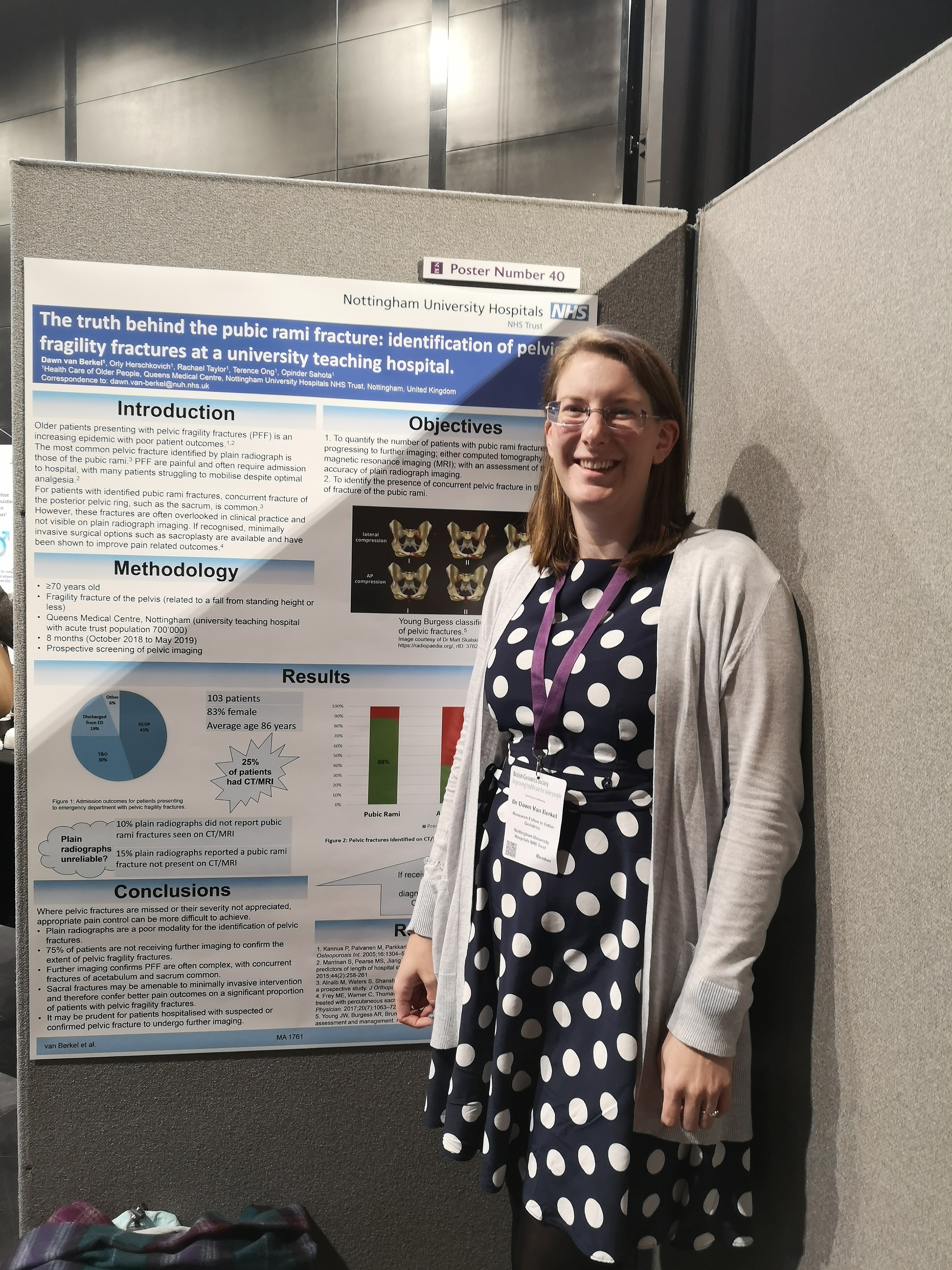
January 23, 2020, by bmillar
The truth behind the pubic rami fracture: identification of pelvic fragility fractures at a university teaching hospital
Dawn van Berkel, O Herschkovich, R Taylor, Terence Ong, Opinder Sahota
Health Care of the Older Persons, Queens Medical Centre, Nottingham University Hospitals NHS Trust, Nottingham, UK
Older patients presenting with pelvic fragility fractures(PFF) is an increasing epidemic.
The most common pelvic fracture identified by plain radiograph is pubic rami fracture. These fractures are painful and often require admission to hospital. However, despite optimal analgesia, many of these patients struggle to mobilise and may have fractures of the posterior pelvic ring, which are overlooked and not visible on plain radiograph imaging. We aimed to quantify the number of patients progressing to further pelvic imaging in the form of computed tomography(CT) or magnetic resonance imaging(MRI) and the presence of concurrent fractures.
Prospective screening of pelvic imaging in patients aged over 70 years was undertaken at Nottingham University Hospitals NHS Trust over an 8 month period from October 2018.
103 predominantly female(83%) patients were confirmed to have an acute fragility fracture of the pubic rami on plain radiograph. 19% of patients were discharged direct from the Emergency Department, 45% were admitted to Health Care of Older People(HCOP) teams, 30% to Trauma and Orthopaedic(T&O) teams and 6% to other specialities. 25% of the patients admitted underwent further pelvic imaging, which confirmed fragility fractures of the pubic rami in 88%, with 40% showing acetabular fractures and 68% showing sacral fractures of all types. A further 10 patients were diagnosed with pubic rami insufficiency fractures on further imaging, having had a normal initial radiograph, but had been admitted with poor mobility due to groin pain. In these 10 patients, 20% also had an acetabular fracture and 60% sacral fractures. Overall, 59% of patients with pubic rami fractures had an ipsilateral sacral fracture; a Type 1 Lateral Compression pelvic fracture by AO classification.
Pubic rami fractures are a significant problem in older people and often require admission to hospital. Further imaging confirms these fractures are complex, with co-existing fractures of the acetabulum and sacrum common. However despite this, only a quarter of patients admitted had further imaging. Where pelvic fractures are missed or severity not appreciated, appropriate pain control can be more difficult to achieve. With the potential for minimally invasive surgical options to aid pain management in sacral fractures, it may be prudent for all patients hospitalised with suspected or confirmed pelvic fracture to undergo further imaging.

No comments yet, fill out a comment to be the first

Leave a Reply